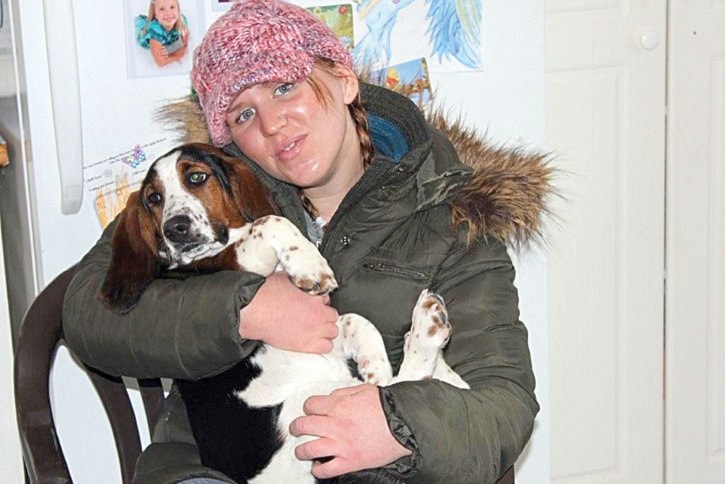Denica McGinnis of Williams Lake had never heard of canine parvovirus (parvo) until her six-month-old basset hound puppy Emma contracted the virus and was ultimately put down a few weekends ago.
Emma had begun vomiting and having diarrhea, and at first the family thought she’d eaten something bad. On the third day of being ill, the family awoke to find Emma in a large pool of blood.
“It happened so fast,” McGinnis said. “We’d switched her dog food recently and wondered if that was it. Now we’re wondering if she picked up the virus at the River Valley Trail.”
McGinnis says she wants to make sure people are aware of the virus and ways that can prevent the same thing from happening to their dog.
“It’s so weird because I’ve been hearing stories about other dogs having it too,” McGinnis says.
Williams Lake Veterinary Hospital’s Dr. Eileen Alberton says contracting parvo is like getting the flu. Some animals will get a really mild case — others will become very very sick.
Because it’s a virus, there’s not much you can give the animal. Instead you have to support the animal while it recovers. That can be costly if the dog has to stay at the vet hospital and needs IV fluids. It needs to be off water until its stomach settles, she says.
McGinnis says she has a friend who paid $3,500 for her dog to be treated for parvo.
Alberton says the virus is more serious in puppies because they don’t have the extra fat to carry them through a couple of days of not being able to eat.
Puppies are vaccinated for the virus routinely with regular shots, but Alberton emphasizes it’s important for dog owners to understand that puppies need to be vaccinated three times at around six weeks, nine weeks and 12 weeks of age or three to four weeks apart.
“The new vaccines we can do closer together so we don’t allow the windows in between because you give a vaccine, the immunity goes up, and you’re protected, but you’re not protected on your way up and you’re not protected on your way down,” Alberton explains.
In addition, it’s two weeks before you can count on the immunity kicking in.
“And if it’s a puppy, you have to have the series of vaccines for me to consider yours a vaccinated dog. I think a lot of times people don’t know to ask the right questions,” Alberton says, adding there’s no harm in even picking up the phone and asking the vet clinic what to do.
It is important that people know how many vaccines their dogs have had.
The parvo virus has been around for just over 30 years.
In 1979 or ‘80 parvo started showing up and wards were filled everywhere with dogs that had the virus because there wasn’t a vaccine for it.
Alberton’s dog was one of the first dogs to contract the virus. It happened while she was in veterinary school. She recalls her dog giving it to another dog that it didn’t even come in contact with.
“I probably brought the virus home on my clothes and some blankets. It’s contagious that way,” she says.
In fact, she adds, it’s crucial that people disinfect their home after a pet has been ill, especially before any other pets come into the home to visit.
Since the virus was introduced there haven’t been big outbreaks, just pockets here and there.
While there hasn’t been an increase in the number of cases, Alberton says they see more cases in spring and summer, probably because people are getting out with their dogs more.
In vet school she learned never to say never, and never to say always, which means while she hasn’t seen an increase, perhaps the mild winter could cause more cases to materialize.
“The parvovirus is the same virus that causes what people call cat distemper. What people call cat distemper is actually caused by a parvovirus. When the disease first came out we were vaccinating dogs with cat distemper because we didn’t have a vaccine for dogs,” Alberton says, adding it’s a bad disease.
